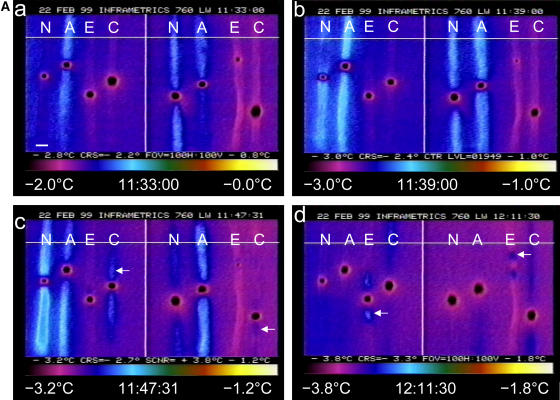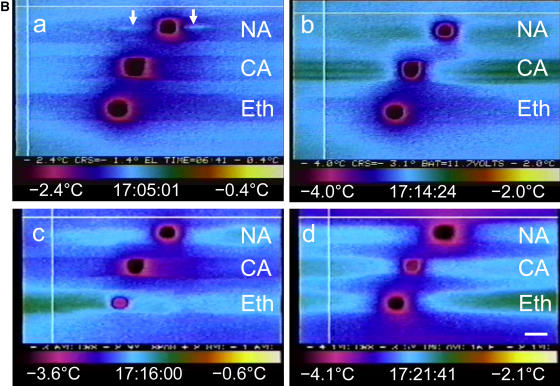Figure 2.
A, Freezing in nonacclimated (N), ABA-treated (A), ethephon-treated (E), and cold-acclimated (C) winter rye leaves observed by IRVT as leaves were cooled 0.05°C min−1 over a period of 38 min 30 s. Each image shows eight winter rye leaves oriented vertically with a droplet of ice+ bacteria placed midleaf. After freezing, the droplet was colder than the ambient temperature due to sublimation of water. The temperature scale and range are shown below each image. a and b, ABA-treated leaves froze first, followed quickly by nonacclimated leaves. c, Initiation of freezing (arrows) in cold-acclimated leaves. d, Initiation of freezing (arrows) in ethephon-treated leaves. Magnification bar in a represents 0.5 cm. B, Freezing in nonacclimated (NA), cold-acclimated (CA), and ethephon-treated (Eth) winter rye leaves. Leaves were cooled at 0.10°C min−1 over a period of 16 min 40 s, and freezing was observed by IRVT. A droplet containing ice+ bacteria was placed midleaf. After freezing, the droplet was colder than the ambient temperature due to sublimation of water. The temperature range and time that the image was taken are shown below each image. a, Arrows indicate two freezing exotherms in nonacclimated leaves that were not observed in either cold-acclimated or ethephon-treated leaves. b, Nonacclimated, cold-acclimated, and ethephon-treated leaves froze within a 1-min interval. c, The exotherm dissipated in the cold-acclimated leaf as the temperature rose by 0.4°C. d, The cold-acclimated leaf refroze upon cooling. Magnification bar in d represents 0.5 cm.


